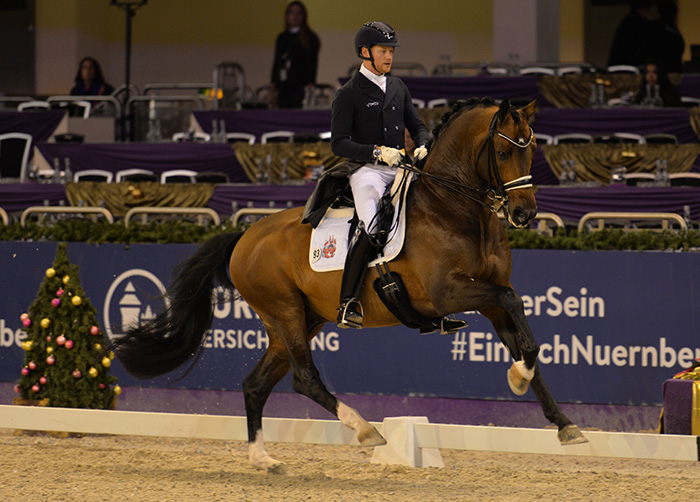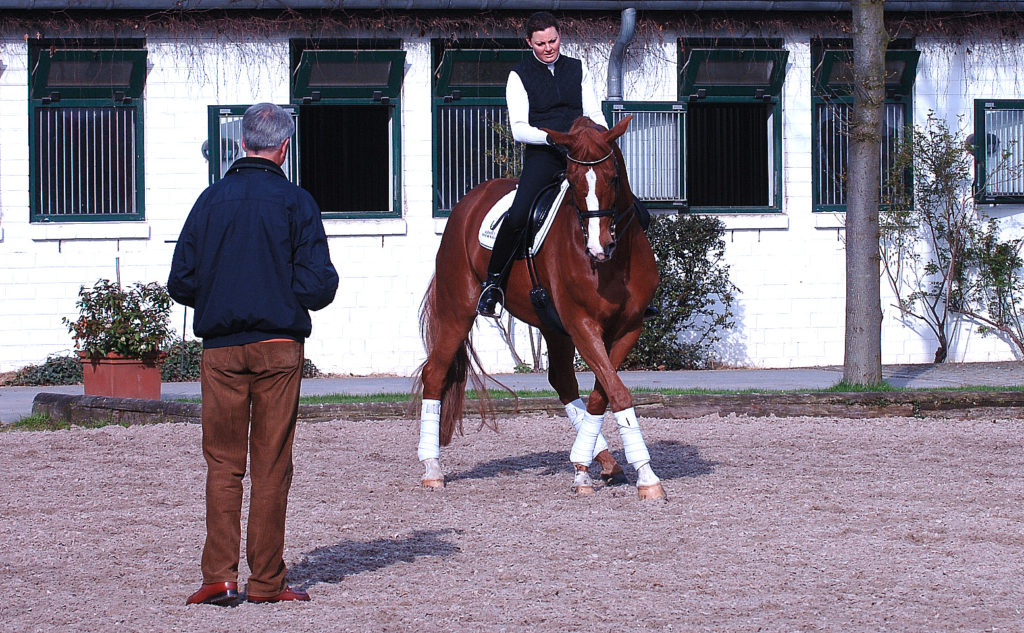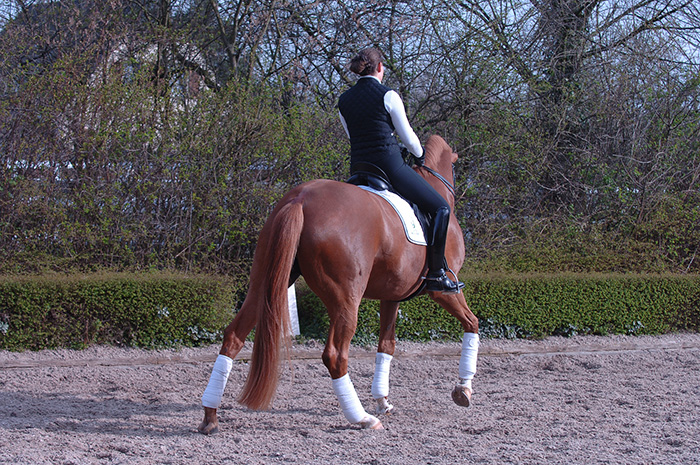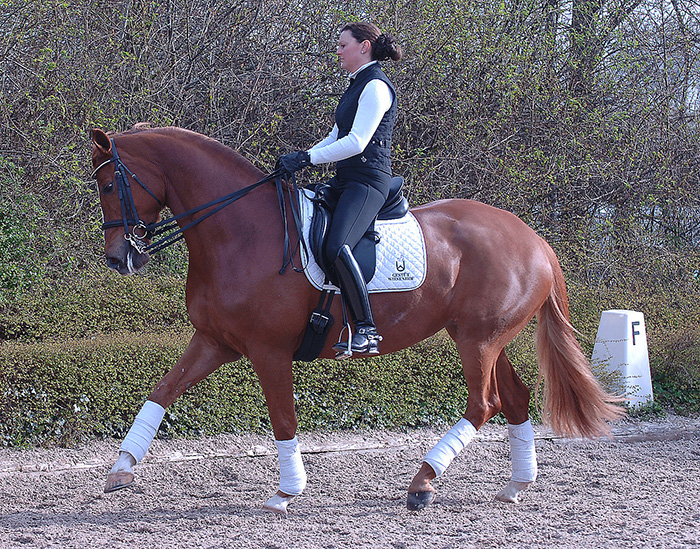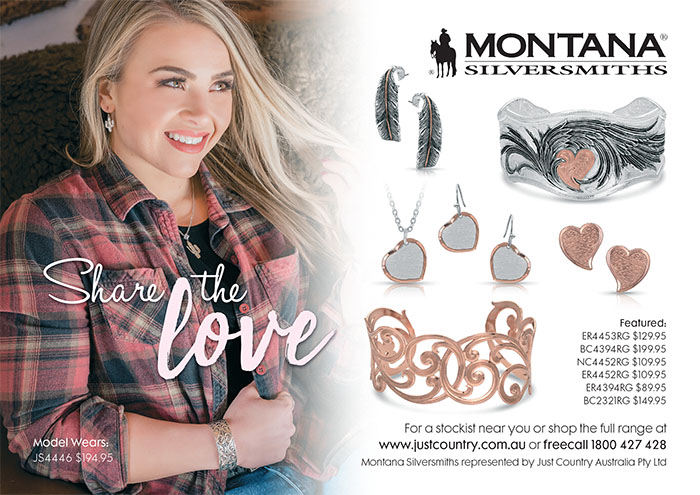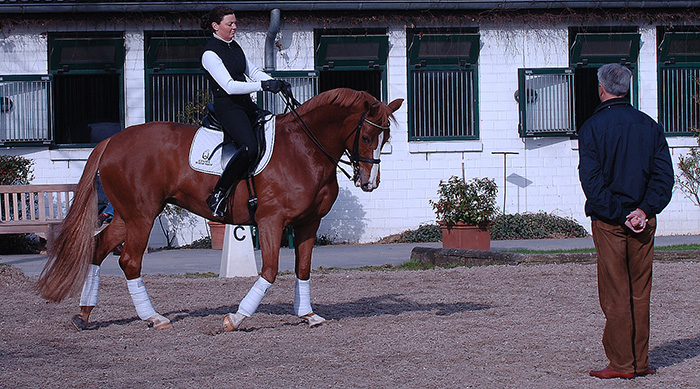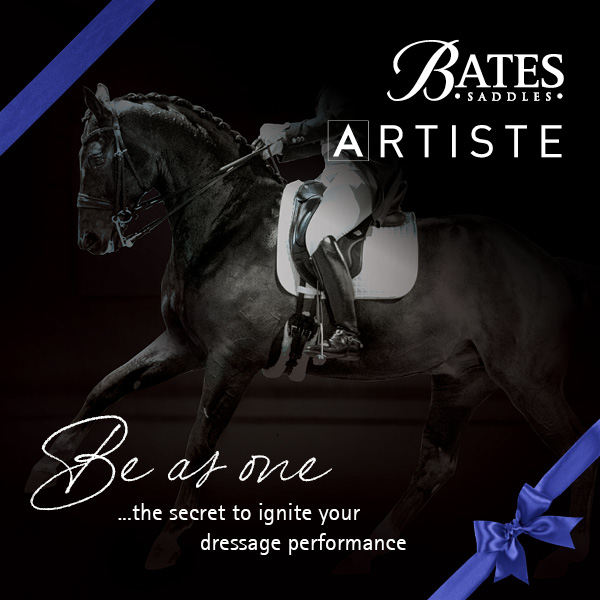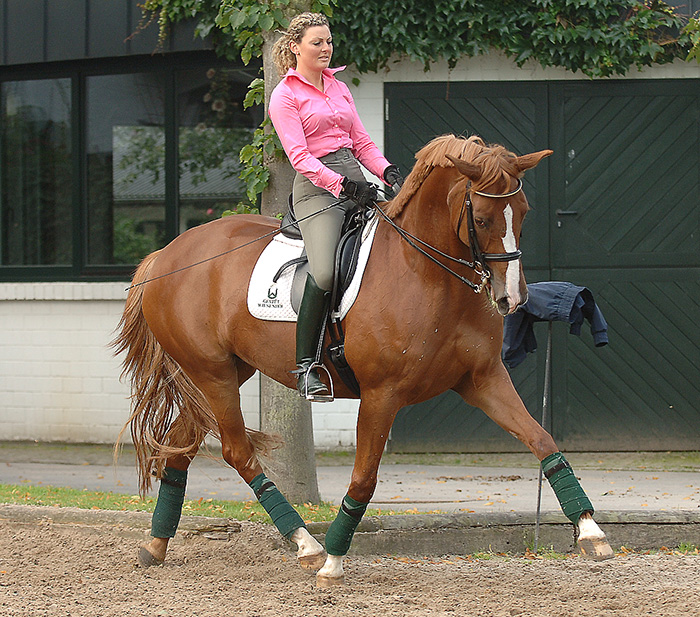Story – Chris Hector & Photos – Roz Neave
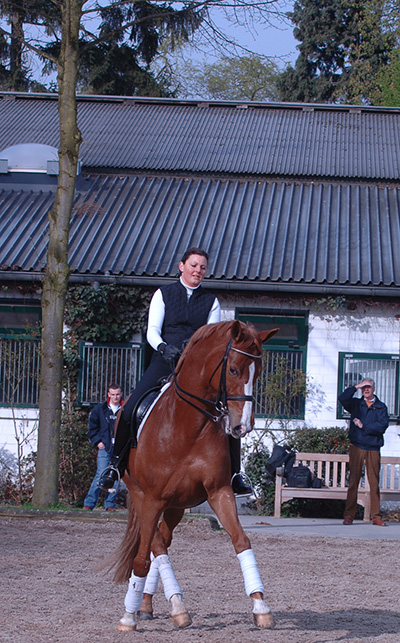
Jean Bemelmans is one of Germany’s most successful trainers of Grand Prix horses. Under his watchful eye, the Spanish team became one of the world’s top dressage nations, and Jean has gone on to work with the French team.
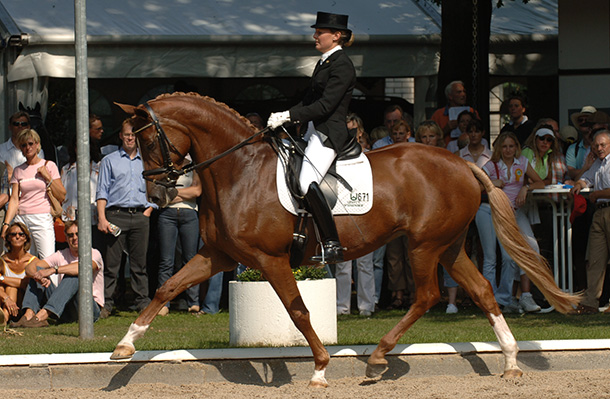
Fie and Media Luna competing at the Bundeschampionat, Media Luna is by the Trakehner stallion, Münchhausen
In this article from 2006, Jean works with Fie Skarsoe, the resident rider at the training yard at the beautiful Wiesenhof Stud.
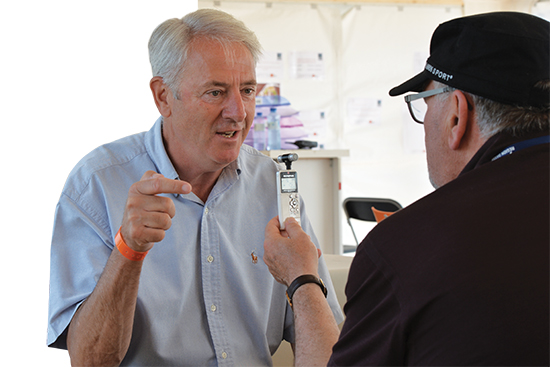
Jean Bemelmans is the consummate professional. His voice is never raised, he speaks quietly, but it is well to listen hard, because he is one of the world’s most thoughtful dressage trainers.
We caught up with Jean – and Fie Skarsoe – at Wiesenhof – to record this discussion on teaching the dressage horse laterals, but as always, with Jean, we had to start at the beginning, at the stage he calls ‘obedience’ before we could move on to ‘gymnastic.’.
Jean on Go Forward… and Sideways
The exercise of walking around the front end:
This is the first step after the horse accepts going forwards, then we try a little bit the sideways movement. They accept inside leg and the hand, if we push on one side, they go to the other. Later if you have a horse that has been badly ridden and it is disobedient, then the first thing I do is test this response. Is this going okay? If it is, then I can start.
Step one – the exercise of walking around the front end:
“This is the first step after the horse accepts going forwards, then we try a little bit the sideways movement. They accept inside leg and the hand, if we push on one side, they go to the other. Later if you have a horse that has been badly ridden and it is disobedient, then the first thing I do is test this response. Is this going okay? If it is, then I can start. When we are talking about teaching lateral work, horses have to first of all accept the leg in a forward movement. Then to move away from the left leg to go right, and the right leg to go left.”
“We start from the ground, and then use the same procedure as when we ride. On a long rein, you come with your leg, and he goes forward, you pat him. If he doesn’t want to go forward, you help with the whip, so he understands that the leg means a forward movement – he has to go away from the pressure and go forward.”
“Step by step, this is a long development. The education of a horse begins with pre-education on the hand, just coming and going. It’s not like horses, you are training all the time, although later on it is more gymnastic than learning.”
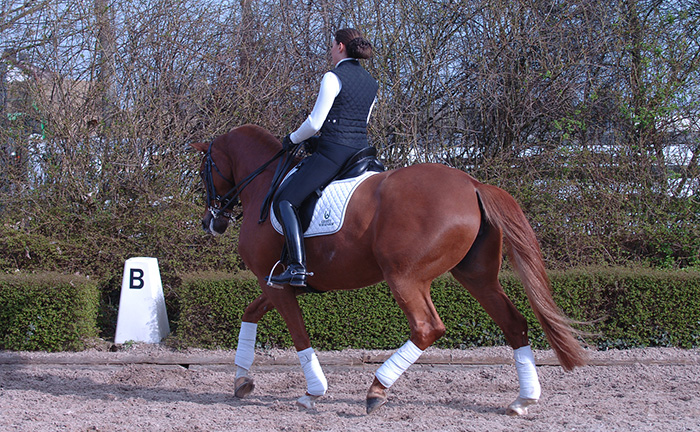
next, introducing the leg yield
Jean on introducing the leg yield…
“The first gymnastic that involves a sideways movement is the leg yield. The horse has the wall to help him, and he can go along the line of the wall, nose to the wall. Then you have your inside leg and your inside rein. If you are on the left rein and you push with the right leg and keep the whip in the right hand to support your right leg, so he understands that he has to go to the left side with the hindquarters.”
“It is also very good to teach this on the circle. Start in the middle of the arena, and made little turns. Make him understand if you come with the left leg with the left rein, that he has to move his hindquarters, to go to the right, so he is turning around his front legs.”
“This is just a leg yield, it is long time until you introduce the shoulder-in. If you see it in ages, then the shoulder-in begins at the age of five. Not before. Look at the scale of education. Here in Germany, the first L level test you do at the age of five. The German Championship for 5 year old horses, that is an L test – but in an L test there is no lateral movement. The lateral movement begins at six, then for the first time you ask for shoulder-in in a test. For the first time you ask for a half pass in a test.”
“Before you do the shoulder in, you do the shoulder fore. You don’t go from nothing to shoulder-in… first you do shoulder fore, before leg yielding, with the young horses, you can do a game move away from my leg – but this is a game, this is not a gymnastic exercise. Shoulder in, shoulder fore, then you are already gymnasticizing the horse.”
Jean on horizontal and vertical lines…
“You have two lines that are very important: one line is the vertical line, the balance of the horse. Then you have the horizontal line and this line gives him the position where he is to be in the neck. In the Grand Prix it is the highest line, when he begins as a young horse, it is the lowest, long and low.”
“These two lines you have to keep in mind all the time. Then you work on these two lines – so if you work on the vertical line, then you don’t start to crack and break this vertical line, you go very slowly, like the shoulder fore, this means riding straight with a little bit position of the neck on the left side, but the body is as straight as possible. Then next step will be to bring the left shoulder a little bit in front of the left hind leg, to work on the straightness, and then, if this all works well, you start a little bit in the way of shoulder in.”
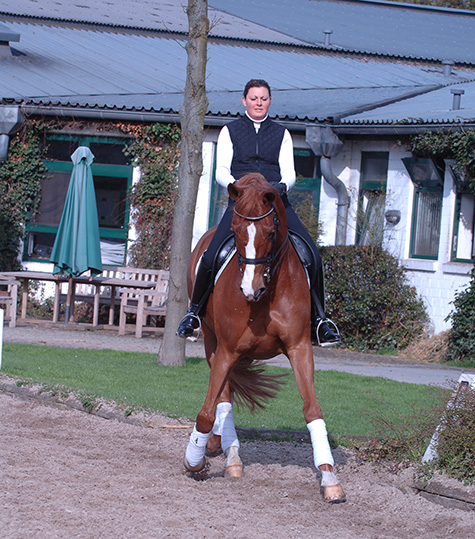
More follows
Jean on Shoulder-in…
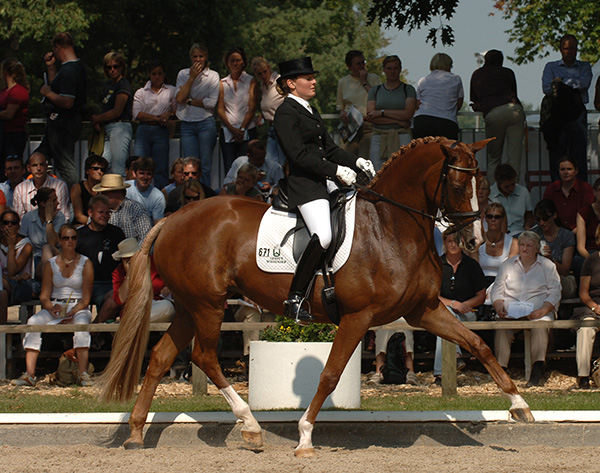
“What is the aim of shoulder-in? The aim is to bring the inside hind leg under the point of gravity, so that the inside hind leg gets strong. As long as they move forwards, they can move away from the weight, but with the shoulder in, the horse has to bring the inside leg more under, and then if he is educated – this is at the age of 5 or 6 – and he knows how to react, then you can activate a little this left leg, bring it more forwards and under, and this makes the left leg strong. On the other side, we do the same thing with the right leg – this is the purpose of the shoulder in, to make the inside leg more strong and able to carry more weight.”
“There are many ways you can teach them the first steps of shoulder-in. One is coming out of the corner, you can do it on the circle, a little bit like the leg yielding we did with the young horses, then more and more, they understand leg and hand and you can put them into shoulder in. To do a good shoulder in, you have the vertical line and you have the horizontal line, but you have to control the horizontal line, because if you don’t control this horizontal line, then how can you bring him under himself with a good contact in front if you don’t have any contact in front – if you lose the contact, or there is no contact, it is not a shoulder in, it is a leg yielding.”
“When I go to a show, I see many horses, many older horses, but I don’t see many shoulder ins, more I see leg yield. More than 50% are not doing shoulder-in, they think they are doing shoulder in, they take the position of shoulder in, but they are not really doing shoulder in because the moment you don’t have good contact, then it is not a shoulder-in.”
“The movement of shoulder-in develops from the hindlegs, it brings movement into the horse, it goes over the back, it comes to the rider, and the rider lets the feel of this movement that comes in his hand into the mouth of the horse, and he lets it come out there. If there is an interruption in this flow, then the hind leg is not working, it is just moving sideways, it all has to be confirmed together.”
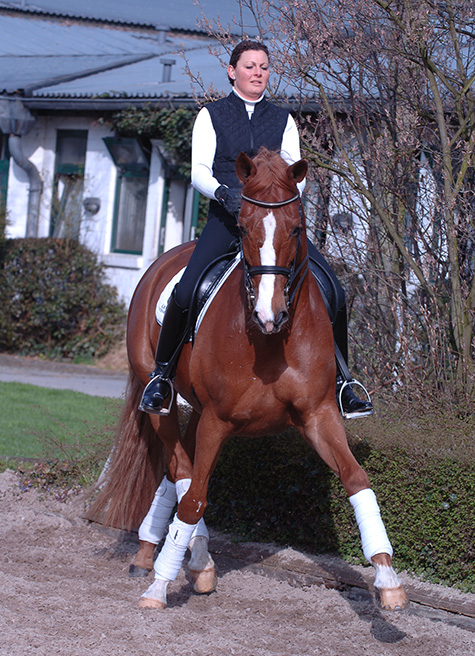
This article first appeared in the August 2006 edition of The Horse Magazine
Interested in breeding dressage horses? Go to www.ihb.com.au and choose one of the best stallions in the world to suit your mare – stallions like Fürstenball
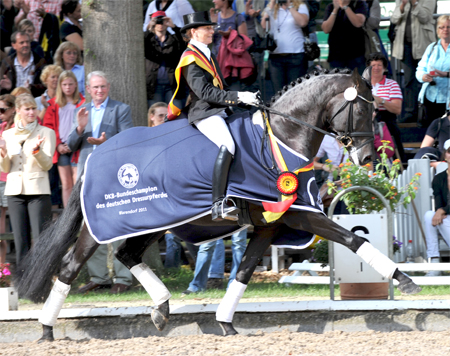
Or Foundation
